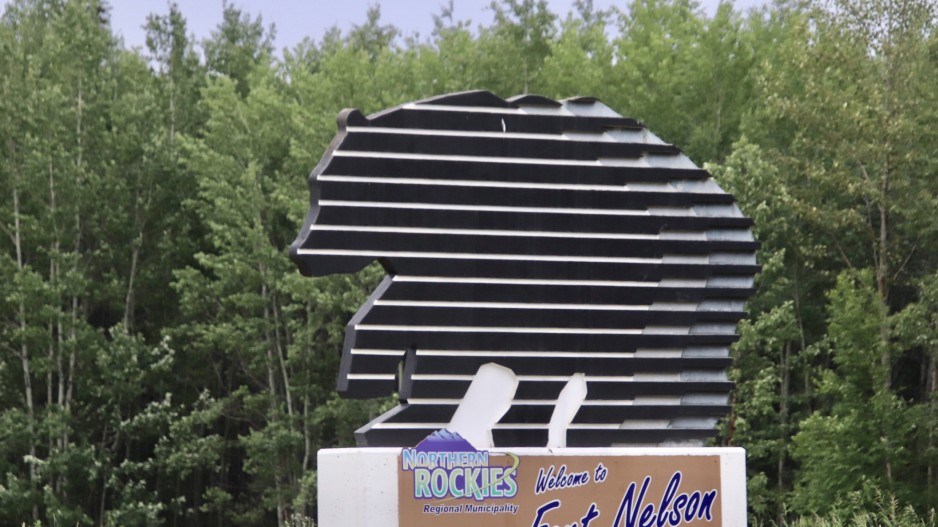For over a decade, the Fort Nelson First Nation (FNFN) and local politicians have been trying to pull themselves out of a 15-year long regional recession by revitalizing the region’s forest industry, which was shut down in 2008.
That’s when Canfor Corp. (TSX:CFP) closed its plywood and oriented-strand-board (OSB) mills, which had followed the closure of the Tackama sawmill in 2005. The closures put an estimated 500 mill workers and 100 loggers out of work.
Fort Nelson is now one of the few B.C. regions that have an undercut: Plenty of annual allowable cut (AAC) because there has been virtually no logging there for more than a decade.
The FNFN now has a significant chunk of that timber. The B.C. government recently transferred a number of forest tenure licences totalling 1.26 million cubic metres per year to the FNFN.
Fort Nelson also has an industry partner willing to invest in the community to help revitalize the local forestry sector.
Peak Renewables bought Canfor’s tenure (553,712 cubic metres per year) for $30 million and is willing to invest $100 million to build a wood pellet mill on the old Canfor mill site.
The idea is to try to restart the logging sector with an “anchor” industry – a pellet mill – with sawlogs sold to other sawmills and OSB mills outside of the Fort Nelson area and lower value timber and waste used to make wood pellets for export.
But that gift of tenure from the province to the FNFN may not be worth the paper it’s written on unless a Canadian National Railway (TSX:CNR) line between Fort St. John and Fort Nelson is upgraded.
A single train now operates on that line once a week. A pellet plant and revitalized logging industry would require about 4,000 rail cars for logs and 8,000 for wood pellets annually.
That extra rail traffic would require rail upgrades estimated at $60 million to $75 million. Until those upgrades happen, Peak Renewables can’t make a final investment decision.
“The rail line needs to be upgraded before that can happen,” said Gary Foster, mayor of the Northern Rockies Regional Municipality.
While the federal government appears willing to help with those upgrades, the B.C. government isn’t, says FNFN Chief Sharleen Gale.
“FNFN applied for federal funding, but the problem is that the province has to match the funding, and they’re not willing to even have a sit-down or chat with me about it,” Gale said. “I did meet with John Horgan during the pandemic and I got a solid no, and I continue to get a solid no.”
An economic analysis estimates the railway upgrades would generate 224 jobs, with 400 created during construction of the pellet plant, up to 70 permanent jobs once the mill is in operation and 300 forestry jobs.
Foster fears that, if the rail line is not upgraded, it could be lost altogether.
“As time passes, if that rail line is not upgraded, I’m sure CN will file to delist that rail,” Foster said. “If that happens, 10 per cent of British Columbia’s natural resources will be lost to the province.”
Dan Davies, Liberal MLA for Peace River North, points out that, though the railway was privatized through the sale of BC Rail to CN, the B.C. government still owns the rail bed.
He said it’s in the government’s interests to maintain the rail line. It’s not just forestry that would benefit from better rail service, he said, but the region’s natural gas industry as well.
The Peak Renewables pellet plant proposal is the best offer Fort Nelson has had in many years for economic development. When Peak Renewables’ tenure is combined with that of the FNFN, it gives the region 1.7 million cubic metres of harvestable timber.
That is a significant amount of timber. But about half of it is aspen, which sawmills can’t use to make lumber. So there is a lot of low value timber there, which explains why Peak Renewables plans to build a pellet mill, rather than a sawmill.
Building a pellet plant in the absence of a local sawmill is backwards to the way it is usually done. They are typically built in an area with a sawmill, because pellet mills use sawmill waste for most of their inputs.
Fort Nelson’s plan is to begin with a pellet mill to restart logging and hope enough critical mass forms that a sawmill or cant mill might eventually be built as well.
As for fears environmentalists might have that forests would be harvested to feed a pellet mill, that’s not the plan, said Peak Renewables CEO Scott Bax.
“There’s never any intent for the pellet mill to run economic fibre – fibre that sawmills would consume or higher grade aspen that the OSB facility in Fort St. John would consume,” Bax said.
High value aspen can be used for making OSB, and Bax added there is an OSB mill in Fort St. John that would buy the aspen.
Spruce, pine and fir sawlogs could be sold to saw mills i n Prince George and Chetwynd. Logging residuals and low-value aspen would be used to feed the pellet mill.
“We must sell that higher value product to higher value uses,” Bax said. “Without that, the project would never work.”
It also can’t work without rail upgrades.
“Moving it 400 kilometres by truck to get to the nearest rail head doesn’t work.” ■




